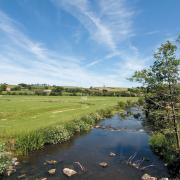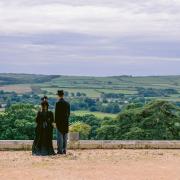Dartmoor in Devon, is a place of mystery. With rumours of fairies, headless horsemen, ghostly dogs and a visit from the devil, is it any wonder then that this strange moorland inspired the spookiest Sherlock Holmes novel?
The Hound of the Baskervilles is perhaps the most well-known Sherlock Holmes story, and it is also the most acclaimed, with Sherlockian scholars naming it the greatest of all the Holmes mysteries in 1999.
But this beloved story wouldn’t exist if it wasn’t for the legend of 17th-century squire Robert Cabell, a man so deplorable that he was even rumoured to be in cahoots with the devil.

Robert Cabell of Brook Manor, near Buckfastleigh, was said to have murdered his wife, sold his soul to the devil and hunted young maidens across Dartmoor with a pack of hellish dogs..
Quite the list of accusations to levy against one man.
When Cabell died in 1677, the locals were still very fearful of him and were worried that his spirit might roam the moors if not contained.
So they placed a large stone slab over his coffin and built a strange prison-like mausoleum around it, all in the hopes of trapping his wicked soul.
Despite the efforts of the villagers, people, from time to time, have claimed to see a shadowy man lead a pack of diabolical hellhounds on a hunt over the moorland.
While others swear that they have seen an eerie red glow emanate from the tomb and have heard the mewling howls of beastly dogs waiting outside to reclaim the squire's soul, which he had promised to the devil.
Either way, Holmes’ investigation of ‘a gigantic hound’ stalking the boggy landscape is almost certainly inspired by these chilling legends that surround Cabell.

Such a claim can be made because the inspiration of the story came to Doyle from friend and fellow writer Bertram Fletcher Robinson, who had grown up near Dartmoor and, therefore, must have heard the gruesome tale.
He told Doyle about a legend involving a hellish hound during a golfing trip to Norfolk in 1901.
This spooky story piqued the detective novelist’s interest so much that he and Robinson soon took a trip to Devon to explore the landscapes of Dartmoor.
In the novel, Brook Hall easily becomes Baskerville Hall, and the Fox Tor Mires is transformed into Grimpen Mire.
The eeriness of Doyle's descriptions of Dartmoor brings the novel to life, and its uncanny mixture of the detective and gothic genres made the story a sensation on publication.

The Hound of the Baskervilles first appeared in monthly instalments in Strand Magazine between August 1901 and April 1902 before being published shortly after in its entirety as a novel.
The story became so popular that people would queue outside the magazine's office waiting for the next instalment.
Ever since Dartmoor has become a must-visit destination for the intrepid Sherlock Holmes enthusiast hoping to retrace the detective's steps.




























